Are you ready to take your knitting skills to the next level? Choosing yarn colors that work together can be exciting, though sometimes daunting, task. There are so many hues, shades, and tones to choose from it’s easy to get overwhelmed by all of the possibilities!
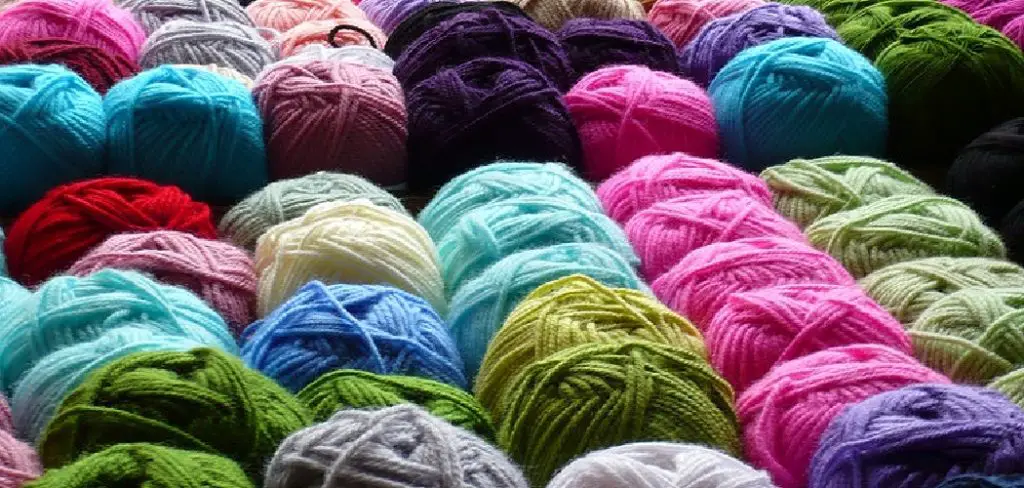
But don’t worry–in this blog post, we’ll cover some of the best tips for how to choose yarn color combinations that will have your projects look even better than ever before. Whether you’re a beginner or an experienced knitter, keep reading to learn exactly how to pick professional-looking threads in just a few easy steps.
What Are the 3 Best Colors that Go Together?
Choosing the right colors for your knitting or crochet project can be a daunting task. But it doesn’t have to be! There are three classic color combinations that almost always look great together: monochromatic, analogous, and complementary colors.
Monochromatic colors are different shades of one single color. This can be a great look for projects like blankets, sweaters, and hats. For instance, if you choose blue as your color of choice, you could easily mix different shades of blue, from dark navy to baby blue or any color in between.
Analogous colors are three or more colors that are next to each other on the color wheel. For instance, you could choose blue, light blue, and green for the colors in your project. This combination is beautiful for projects like shawls and scarves where you want a more subtle look.
Complementary colors are two colors that are opposite each other on the color wheel, such as blue and orange or yellow and purple. This combination creates a bold and contrasting look that is perfect for projects like bags, mittens, and hats.
What Is the Most Powerful Color Combination?
The most powerful color combination is an all-neutral palette. There are many neutral shades of yarn, and by using them together, you can create a beautiful yet subtle effect that is both calming and inviting. Shades like beige, cream, white, light gray, charcoal, and taupe look great when paired together for a monochromatic design.
For extra depth, you could also try adding textures such as tweed or mohair to give the piece more dimension. This classic combo works well in almost any project, from afghans to baby blankets to shawls.
Another great option is to use analogous colors – those that sit next to each other on the color wheel, like green and blue or orange and yellow. This type of combination is both calming and pleasing to the eye, making it a great choice for home decor accessories like pillows or throws. It also works well in garments such as sweaters or hats, adding a bit of vibrant color without being too loud.
Finally, if you’re looking for contrast, combining complementary colors – those that sit opposite each other on the color wheel – can create beautiful results.
Try yarn shades such as pink and teal, burgundy and mint green, navy blue and coral, or emerald green and peach for stunning projects that are sure to stand out from the crowd. With so many possibilities when it comes to choosing yarn color combinations, you’ll never run out of inspiration!
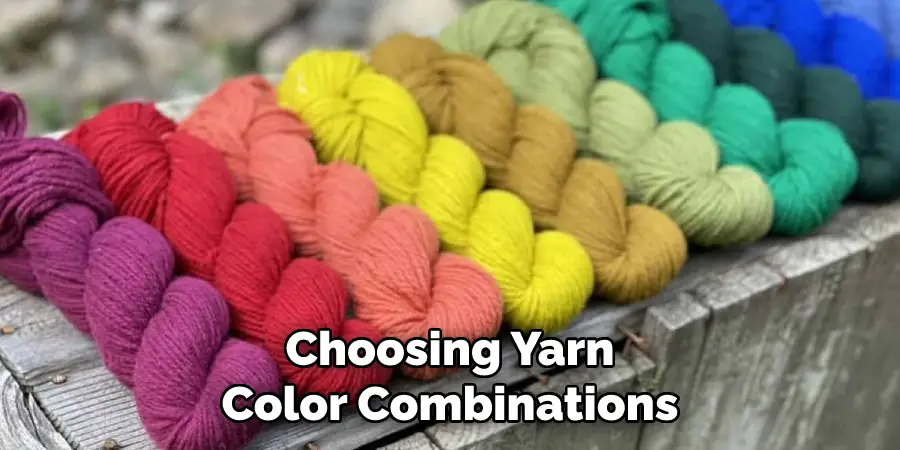
10 Methods How to Choose Yarn Color Combinations
1. Look at Photos of Finished Projects
One of the best ways to choose yarn color combinations is to look at photos of finished projects. This will give you an idea of what colors work well together and which ones don’t. You can find photos of finished projects online or in magazines. If you’re stuck on what colors to choose for a project, looking at photos of completed projects can give you some great ideas.
2. Consider the Purpose of the Project
Another thing to consider when choosing yarn color combinations is the purpose of the project. For example, if you are making a baby blanket, you might want to use softer, pastel colors.
If you are making a scarf, you might want to use brighter, more vibrant colors. When selecting yarn color combinations, think about the purpose of the project and select colors that will help you to achieve your goal.
Make sure that the colors complement each other and that they will create a pleasing finished project. The colors should also be appropriate for the person who will be receiving or using the finished project.
3. Choose a Color Scheme
One way to narrow down your choices is to choose a color scheme. There are many different color schemes to choose from, such as monochromatic, complementary, analogous, and triadic. Once you have chosen a color scheme, you can pick specific colors that will work well together.
If you are looking for a bold look, try complementary colors, which are opposite each other on the color wheel. If you want something more subtle and muted, choose analogous colors, which are side by side on the color wheel.
You can also choose a monochromatic color scheme for a more modern look. Whichever scheme you choose, make sure the colors complement each other and help create a unified look.
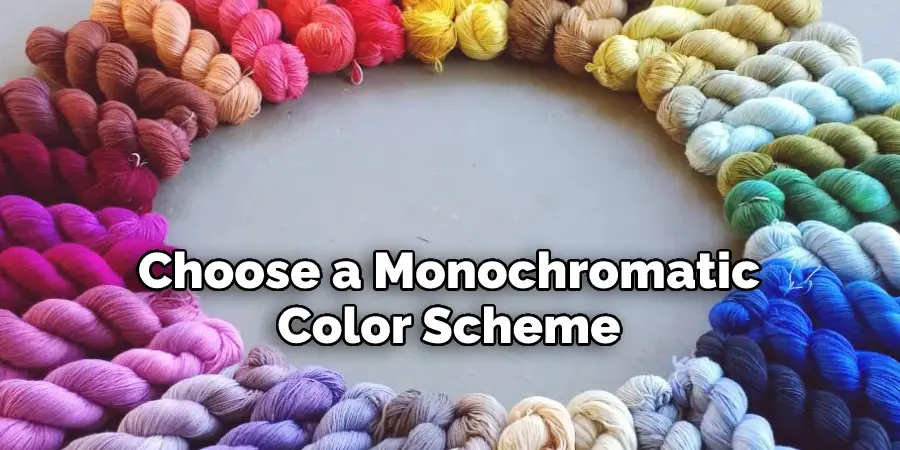
4. Think about the Mood You Want to Create
Another thing to consider when choosing yarn color combinations is the mood you want to create. For example, if you want to create a calm and soothing mood, you might want to use muted colors. If you want to create a more energetic and exciting mood, you might want to use brighter colors.
When choosing the colors, it’s important to think about the mood you want to create and find colors that will help achieve this.
Additionally, if you’re trying to create a specific look, such as a vintage or modern feel, you should take this into consideration when choosing colors. Finally, make sure the colors you choose coordinate with the other elements in your project, such as buttons, ribbons, and fabric.
5. Consider the Fiber Content of the Yarn
When choosing yarn color combinations, it’s also important to consider the fiber content of the yarn. Different fibers take dye differently, so this can affect the final color of your project. For example, wool yarn tends to take dye more evenly than acrylic yarn, so the final color of your project will be more consistent if you use wool yarn.
6. Decide on the Main Color and Then Add Accents
Another way to choose yarn color combinations is to decide on the main color and then add accents. This is a good option if you are unsure about which colors go well together. Once you have chosen the main color, you can then add one or two accent colors that will complement it nicely.
When deciding on accent colors, consider using a lighter or darker shade of the main color for a more subtle effect. Alternatively, you can choose contrasting colors that will stand out and make a bold statement. Whatever colors you choose, make sure they all work together to create the desired effect. Once you have chosen the colors, you can begin knitting your project.
7. Use a Color Wheel
A color wheel can be a helpful tool when choosing yarn color combinations because it shows how different colors relate to each other. The primary colors (red, yellow, and blue) are located at equal intervals around the wheel.
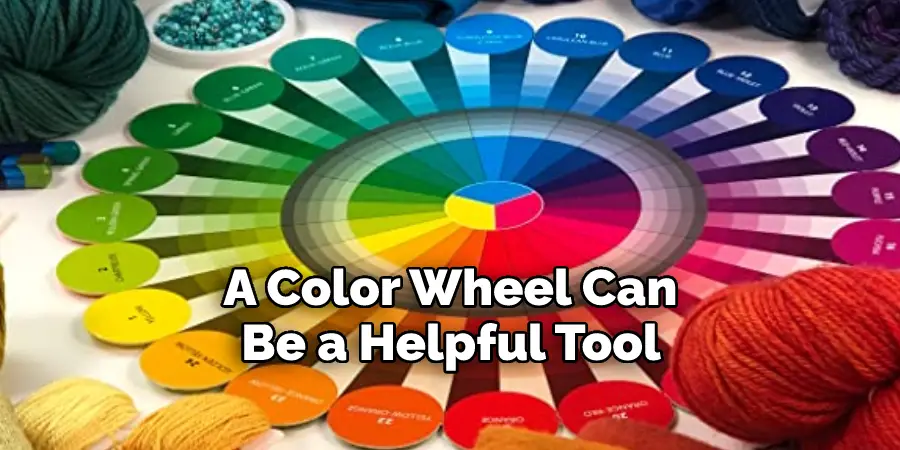
The secondary colors (orange, green, and purple) are located between the primary colors on the wheel. And the tertiary colors (yellow-orange, red-orange, red-purple, blue-purple, blue-green, and yellow-green) are located between the secondary colors on the wheel.
8. Experiment with Different Color Combinations
Sometimes the best way to choose yarn color combinations is to experiment with different colors. You can purchase small amounts of different colors of yarn and swatch them together to see how they look before committing to a project. This will help you decide which colors will work best together for your project.
If you have multiple colors of yarn, you can also experiment with different color combinations. This will allow you to create interesting and unique designs that are pleasing to the eye. Try mixing different shades and textures of yarn to create a truly unique look. With a little practice, you can easily create beautiful color combinations for your knitting or crocheting projects.
9. Choose Colors That Compliment Each Other
Finally, when choosing yarn color combinations, it’s important to choose colors that complement each other. Two or more colors that are too similar may not provide enough contrast in your project, while two colors that are too far apart on the color wheel could be jarring or overwhelming. Look at photos of finished projects and use a color wheel to help you choose colors that are in the same color family but still provide enough contrast.
10. Have Fun with it!
Choosing yarn color combinations can be fun and creative, so don’t be afraid to experiment and play around with different ideas. You never know what combination will look amazing until you try it out. Don’t be afraid to take risks and explore new possibilities when coming up with color combinations for your projects! With a little bit of practice, you will soon become an expert in choosing yarn color combinations. Have fun, and enjoy the process!
By following these tips, you will quickly become an expert in choosing yarn color combinations for all your projects. Remember to experiment and have fun with it! With a little practice, you can easily create beautiful and unique color combinations for any project. Happy knitting!

For more detailed information about choosing yarn color combinations, check out resources such as books on fiber arts or online tutorials. Or visit your local yarn store to get tips from knowledgeable experts. With these helpful tips and a little practice, you will soon become an expert in choosing the perfect yarn color combinations for all of your knitting or crocheting projects! Good luck!
Things to Consider When Choosing Yarn Color Combination
1. Start with the Project You Have in Mind:
When choosing a yarn color combination, it is important to think about what kind of project you are planning to make. Think about the mood you want to create, what colors would best represent that, and how those colors will look together.
Consider whether the project will be a solid color or multi-colored. This can help narrow down your choices and make choosing the perfect yarn color combination much easier.
2. Pick Your Favorite Colors
When it comes to choosing yarn color combinations, the most important thing is to pick colors you love. Pick a range of colors that appeal to you and create a combination that makes sense. Think of how the colors will look when placed next to each other and whether they will work well together in the finished project.
3. Understand Color Theory
Understanding basic color theory can be helpful when selecting yarn color combinations, as it can give you an idea of what kind of palette would best suit your project. For example, a monochromatic palette involves shades of one single color, while analogous palettes use three related colors such as green, yellow-green, and blue-green.
You may also wish to consider complementary colors (opposite each other on the color wheel) or triadic colors (three colors equidistant from one another on the color wheel).
4. Don’t Be Afraid to Experiment
When it comes to choosing yarn colors, don’t be afraid to experiment and try out some new combinations.
You never know what kind of stunning results you may get! If you are feeling overwhelmed by all the possibilities, start with a few basic colors and see how they look when combined together. Then gradually add in more shades as you go along. Once you have settled on your favorite combination, it’s time to get started on that project!
You Can Check it Out to Dye Easter Eggs with Tissue Paper
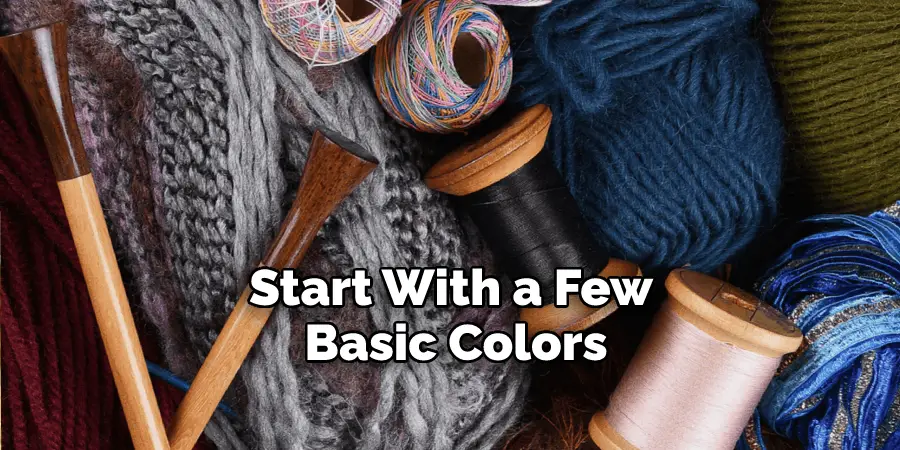
Conclusion
Hopefully, this guide on how to choose yarn color combinations helped you understand a little more about yarn color combinations and how to pick the perfect colors for your next project! If you’re still feeling stuck, there are plenty of resources online and in yarn shops that can help.
And don’t forget, sometimes the best way to figure out what looks good is to experiment! So grab some skeins of different colors and start playing around. Have fun with it and see what beautiful creations you can come up with.
You Can Check it Out to Wrap a Hat Gift

